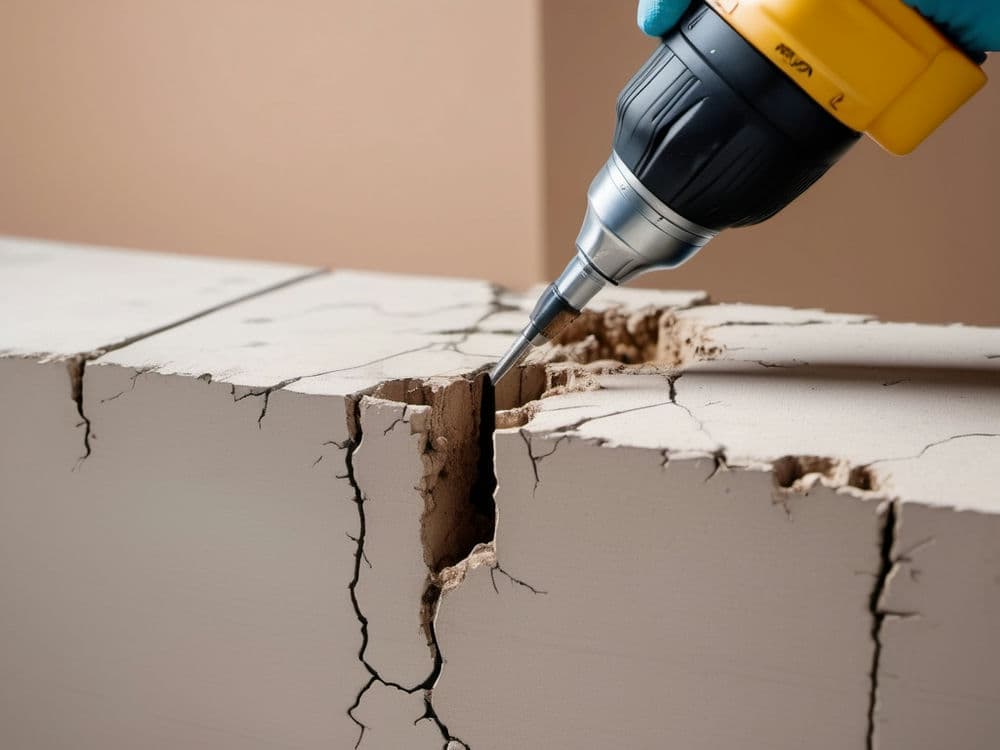

Helical pile installation marks an important shift in foundation engineering, offering an efficient and effective solution for both commercial and residential structures. This technology, which echoes the principles of geotechnical engineering, has transformed the way we approach foundation stability, particularly when soil conditions are difficult.
Helical piles' design integrates the physics of screw threads and the geometry of helix, making them ideal for piercing different soil kinds. The components, made of sturdy materials such as steel, demonstrate outstanding tensile strength and durability.
One of the key aspects of helical pile installation is to achieve the capacity of load you want to achieve. This is the point where the connection between installation tension and capacity becomes vital. The most modern torque gauges, such as the Chance Digital Torque Indicator, are a key component in this process by providing precise measurements, and removing the uncertainty associated with estimates of pressure in hydraulic systems.
The speed at which the installation takes place is vital, generally ranging between 8 and 16 RPMs. This controlled speed ensures that the pile moves approximately three inches each revolution in accordance with the pitch of the helical plates. If the pile isn't moving according to plan, adjustments such as raising downward thrust or adding larger plates for helicals are made to prevent spinning out like a screw stripping its threads.
Transmission Construction: Micropile-Grillage Base Works in Virginia's Mountains T&D World
Posted by on 2023-05-31
The construction industry constantly seeks new ways to improve efficiency, cut costs and preserve the integrity of its structures. In this pursuit Helical piles have emerged as an innovative technology changing the way we think about foundational support. This article delves into the reasons behind the growing popularity of the helical pile for construction, focusing on their distinct advantages and the applications driving this transformation.
Helical piles, sometimes called screw piles, are foundation solutions that are used to secure new or existing foundations. They are made of steel and feature the helical section of lead that permits them to be driven into ground similar to screwing into wood. This design is a huge change from conventional concrete foundations, and provides a number of advantages that meet modern building requirements.

Helical piles also referred to as screw piles a type of foundation that is deep and consists of one central shaft that has some or all of the blades that are shaped like helixes. This design enables the screw to be inserted into the ground, providing a secure and stable foundation for a variety of structures. The origins of the helical piles are in the 19th century innovations from Irish engineer Alexander Mitchell, helical piles have advanced and are at the forefront of current foundation technology.
One of the most notable advantages of helical piles are their ease and speed of installation. In contrast to traditional concrete foundations which require significant excavation and curing times they can be easily installed with hydraulic machinery. This does not just speed up the construction process, but reduces the impact on the surrounding environment. The less need for huge excavation areas makes them advantageous in urban settings or in areas with environmental concerns where preserving the natural landscape is paramount.
In addition to their core benefits, helical piles are also equipped with other advantageous features that further strengthen their place in modern construction. They include:
These additional advantages, when combined with their main benefits are what are what make Helical piles extremely flexible and reliable foundation choice for a wide range of construction projects.

Speed of construction is among the biggest benefits of helical piles. Contrary to conventional foundations that require long excavation and curing Helical piles can be installed rapidly, often within hours. This is not just saving time but also cuts down on labor costs and makes projects more cost-effective.
Another hidden strength of helical piles lies in their minimal environmental impact. Their installation process is less disruptive, resulting in less soil disturbance. This is especially beneficial in ecologically sensitive areas or urban settings where maintaining the integrity of the environment is crucial.
Building on the foundational strengths of helical piles, their use in construction projects offers many advantages. These are in the following manner:
These factors highlight the many benefits of using Helical piles in highlighting their role in enhancing efficiency, sustainability and efficiency in construction.
